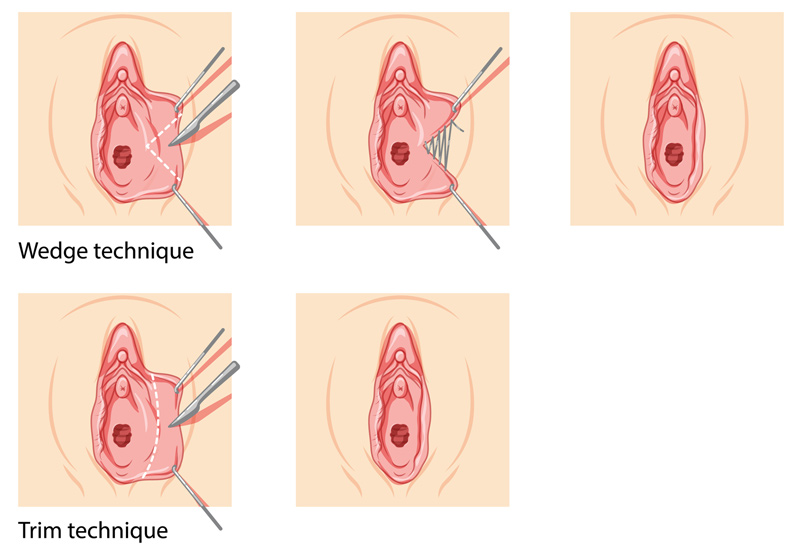

Labiaplasty is surgery done to reduce or increase the size of the labia minora, which is the skin folds that surround the urethra and vagina. Excess skin can get twisted and pinched, causing discomfort during physical activities, exercise, and intercourse.
During surgery, the surgeon will do one of the following:
- Remove some tissue from the labia to reduce its size.
- Reconstruct a labia from other tissue.
- Inject a filler material or fat into the labia to enlarge it.
Who Needs Labiaplasty?
The procedure may be done for the following reasons:
- Reduce the size of the labia minora to keep it from protruding beyond the edges of the labia majora. This is done to alleviate discomfort and irritation from labia that gets twisted, turned, pinched, or tugged during physical activities.
- Improve hygiene and health by removing excess tissue that can make cleansing difficult and hold bacteria that can lead to urinary tract infection.
- Reduce asymmetry of the labia majora or labia minora if one side is longer than the other or oddly shaped.

Causes of Oversized Labia
The following factors can lead to an oversized labia:
- Genetics
- Fluctuations in weight
- Pregnancy and childbirth
- Menopause or hormonal changes that thin the tissue of the labia majora and allow the labia minora to protrude
What to Expect During Surgery
Upon arrival at the medical facility, the patient will change into a surgical gown and a nurse will take the patient’s vitals. Patients may submit blood and urine samples again and an intravenous line will be inserted into their arm or hand. A urinary catheter may also be placed in the urethra.
The provider will then cleanse the labia and the skin around it, and shave the pubic area, if necessary. The patient will be put under local or general anesthesia, depending on the type of procedure, and the surgeon will make the necessary surgical adjustments.
All incisions will be closed with absorbable stitches and the surgical site will be covered with dressing. The entire procedure will take less than one hour.
